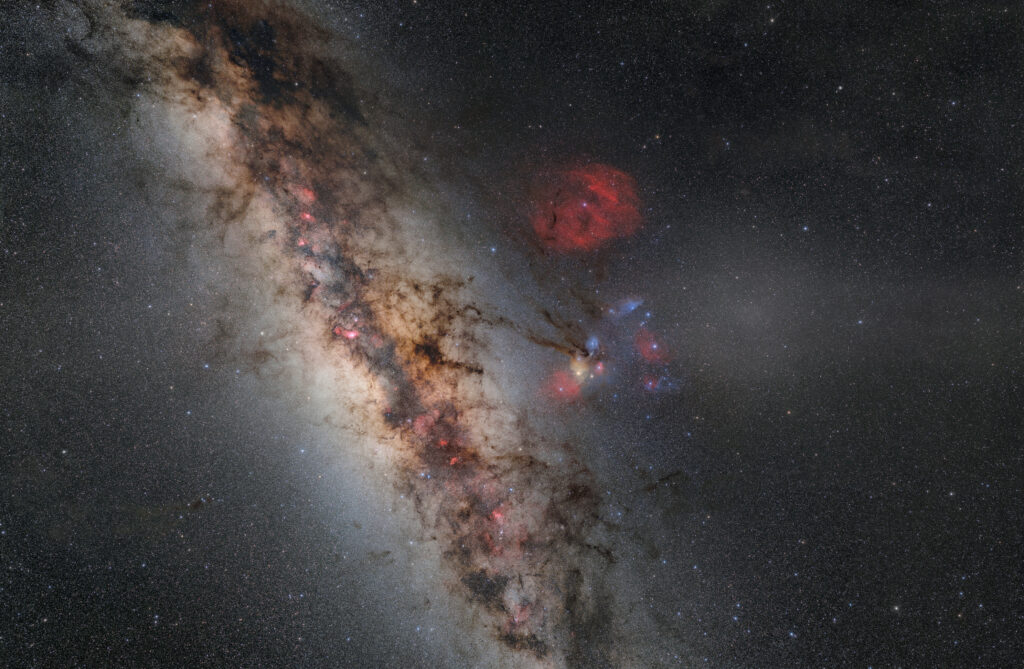The presented image was taken in the vicinity of the Chilean mountain Cerro Pachon. It is home to the Gemini South and SOAR telescopes, as well as the Vera Rubin Observatory under construction.

The image is dominated by the dazzling band of the Milky Way. A significant part of the inhabitants of our planet has long been deprived of the opportunity to admire it because of light pollution. That is why modern telescopes are placed in high-altitude regions remote from civilization.
It can be noted that part of the Milky Way is closed by a dark band known as the Great Rift. It occurs due to dust clouds located at a distance of 2-3 thousand light–years from Earth, which completely block visible light, significantly complicating observations of the galactic center.
The characteristic multicolored group of nebulae that can be seen to the right of the center of the image is known as the Rho Ophiuchi cloud complex. Some of them are reflective nebulae that scatter the bright blue and yellow light of nearby stars, some are emission nebulae which red glow is caused by hydrogen ionization. Hidden among this interstellar complex is the Rho Ophiuchi star system itself, as well as the red supergiant Antares.
Above this multicolored group is a much larger dark red emission nebula known as Sh2-27. It surrounds the star Zeta Ophiuchi. A characteristic bright area in the sky to the right of the cloud complex of the Rho Ophiuchi is called a counter-radiance. It is part of the zodiacal light and has the same nature. The gegenschein occurs due to the scattering of sunlight on a cluster of dust lying in the plane of the ecliptic of the Solar System.
According to https://noirlab.edu
Follow us on Twitter to get the most interesting space news in time
https://twitter.com/ust_magazine

